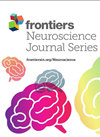投稿信息
稿件收录要求
Frontiers in Neuroscience is a leading journal in its field, publishing rigorously peer-reviewed research across a wide spectrum of specialties and disciplines. Field Chief Editor Idan Segev at the Hebrew University of Jerusalem is supported by an outstanding Editorial Board of international researchers. This multidisciplinary open-access journal is at the forefront of disseminating and communicating scientific knowledge and impactful discoveries to researchers, academics, clinicians and the public worldwide.
These are historical times for brain research - namely for the Brain itself. The convergence of novel molecular and optical techniques paves the way to the era of "causation neuroscience," whereby many thousands of cells composing the system studied can be recorded from and manipulated in a very specific manner (e.g. via "optogenetics") and the behavioral and functional consequences of these manipulations explored in vivo. It is also a new era of "anatomical neuroscience" - as recently developed techniques, both at the whole-brain level ("connectome") and the local circuit and synaptic level ("connectomics") become more widely used. These approaches allow us to link structure of specific brain regions and local circuits to function more astutely. New research fields have recently emerged, e.g. "neuroeconomics" and "neuroenergetics." In addition, and critically, in our information-generating world, new informatics-based methods are being developed to store the enormous amount of new “big data” in a systematic manner, for data-preservation, data-mining and for extracting key information from these data. And, importantly, theoretical and computational approaches are being developed for integrating this diverse data and for deriving principles of brain operations that may otherwise lie hidden within the intricacies of brain circuits.
As the field is growing fast, we seek to integrate and cross-link studies and citations in related subfields, providing an overview of the state-of-the-art in these fields and the ways in which they complement each other. After all, we may each of us look at the brain from particular standpoints - all the way from "genes to behavior" - yet the brain integrates all these levels seamlessly; this journal should reflect this in the best possible way.




